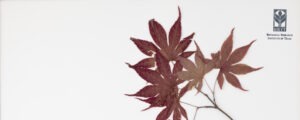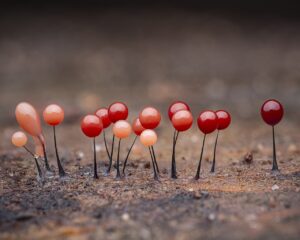FORT WORTH, TEXAS, May 1, 2016—The Nature of Things: Daphne Prairie, an exhibition of new paintings and drawings by Texas artist Deborah Paris, will give the Fort Worth public a rare opportunity to see depictions of the untouched and historic Daphne Prairie. The exhibition will pop-up September 10–October 20 at the Botanical Research Institute of Texas (BRIT). An opening reception with hors d’oeuvres and libations will be held on Fall Gallery Night, Saturday, September 10, from 4:00 to 9:00 p.m. A gallery talk by the artist will take place September 10 at 6:00 p.m. The show will include twenty-five oil paintings that reveal the open yet intimate space found in North Texas’ Daphne Prairie—one of the state’s largest remaining tallgrass prairies. The pieces range from large-scale landscapes to smaller, inviting scenes, offering viewers a variety of perspectives and reinforcing the visual opulence to be found among the prairie’s many species and spaces. Nearly a dozen “found still life” canvases appear as well and feature detailed views of indigenous flora and fauna. Paris has also included several charcoal drawings and etchings in the collection. A full-color catalogue chronicling the Daphne Prairie project will be available.
Hidden in plain sight among the pastures, roads, and small towns of Franklin County, Texas, Daphne Prairie survives as a contemporary relic bearing witness to what the land once was. Tallgrass prairies like Daphne are extraordinarily rare, and less than 1% of these native prairies are left in the state of Texas, victims of plowing, over-grazing, and development. Unlike their flat, vast cousins, tallgrass prairies are smaller and lush, encompassed by trees and sporting characteristic “mima mounds.” The lands also support a wide variety of indigenous wildlife and plant ecosystems. That Daphne Prairie exists today is a credit to prairie owner, BF Hicks, whose family has preserved the land since the early nineteenth century. Paris worked with Hicks to gain access to the property, which he routinely makes available to visitors who want to explore its distinctive collection of plants, birds, and other animals.
Indicative of Paris’ creative process, the Daphne Prairie project is deeply rooted in the artist’s extensive fieldwork and observation. Nearly a year-and-a-half elapsed as she savored all four seasons, dynamic weather changes, and animal migrations. That real-life experience is the predominant force that drives Paris’ creativity—directly informing her work and also granting her the artistic freedom to interject the ethereal, atmospheric essence of place into her compositions.
“As with all my work I want to communicate the richness of the natural world and our place in it,” says Paris. “I also want to encourage recognition of special places like Daphne Prairie. On a more personal level, my hope is always to affect a sort of transcendent moment where the viewer is, if not transported, at least able to have their own experience of the landscape.”
Connect with Deborah Paris
http://facebook.com/Deborahmparis
https://www.instagram.com/deborah.paris/







